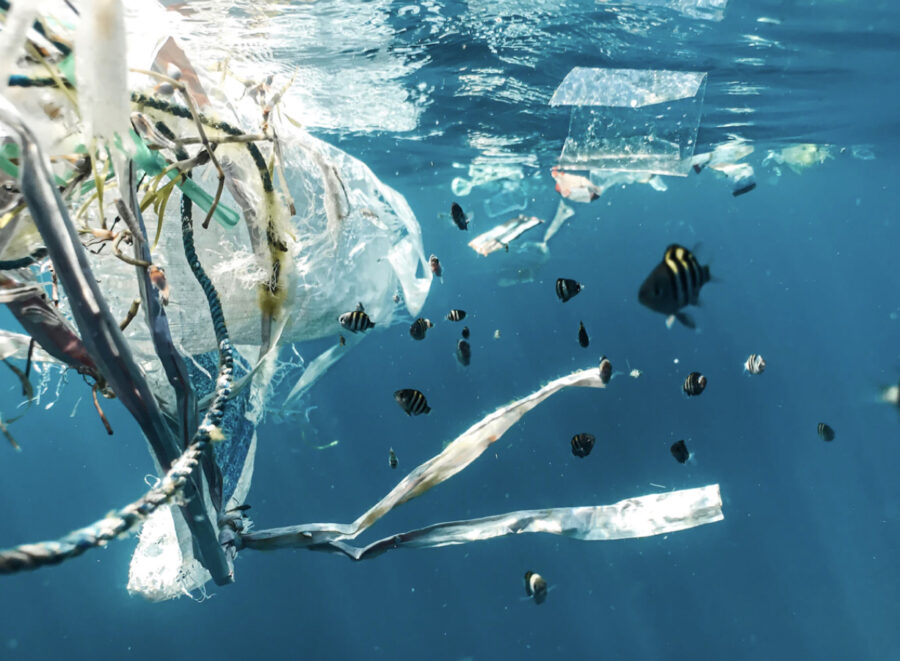Editorial: What Are Microplastics?
Plastic floats around the ocean as fish swim towards it. 12 million tons of plastic gets dumped into the ocean each year. “Not only are plastics polluting our oceans and waterways and killing marine life – it’s in all of us and we can’t escape consuming plastics.” – Marco Lambertini, Director General of WWF International. (Naja Bertolt Jensen/Unsplash/CC BY- SA 2.0)
January 11, 2023
Microplastics can be found almost everywhere, but have you ever pondered on the fact that it can be in your daily used products?
The National Geographic Society said microplastics are “tiny plastic particles that result from both commercial product development and the breakdown of larger plastics.” Many products like toothpaste, gum, lipsticks, shower gels, body scrubs, and almost every single mascara contains microplastic pieces in them. The real question is, how can this impact humans?
In a paper published by Environment International, researchers found plastic particles in the blood of 17 out of 22 participants in the study. These particles could travel throughout your body and can possibly get lodged in organs if there is enough build up. Scientists are still unclear on how this may impact people’s health, but there is still great concern if the particles can cause damage to human cells or cause chronic DNA damage.
According to Forbes, an average human being inhales about 7,000 micro plastic particles just in their home. You may think that this is not affecting you, but these particles can lead to various health issues and diseases long term, considering they are foreign particles that can disrupt the regular function of your body.
There are many uses of plastic that are needed in our ever growing society, such as medicine, food safety and technology, but there are so many products that aren’t a necessity that contribute to the microplastic pollution. Do we really need lawn decorations for every holiday throughout the year? There are many options that could be healthier and more sustainable for the environment, like yard light projectors.
The plastic pollution crisis goes hand in hand with consumers’ decisions. When it comes to the average consumer hygiene, safety and food are more important factors to daily consumption than the environmental impacts they will be causing.
A new report, conducted by the environmental groups Beyond Plastic and The Last Beach Cleanup, states that Americans generate over 40 million tons of plastic waste every year. Less than 6% of that is recycled, which means that America is contributing to a total of 75-199 million tons of plastic particles worldwide in our air, Oceans, forests, and more.
As societies learn more about the issues of plastic pollution, global warming and climate change, the more we as a community come together to make a difference for a better and healthier world.
Consider donating to one of the 19 organizations whose mission is fighting plastic pollution. Any modifications you make contributes toward the greater effort of addressing the plastic pollution crisis.





